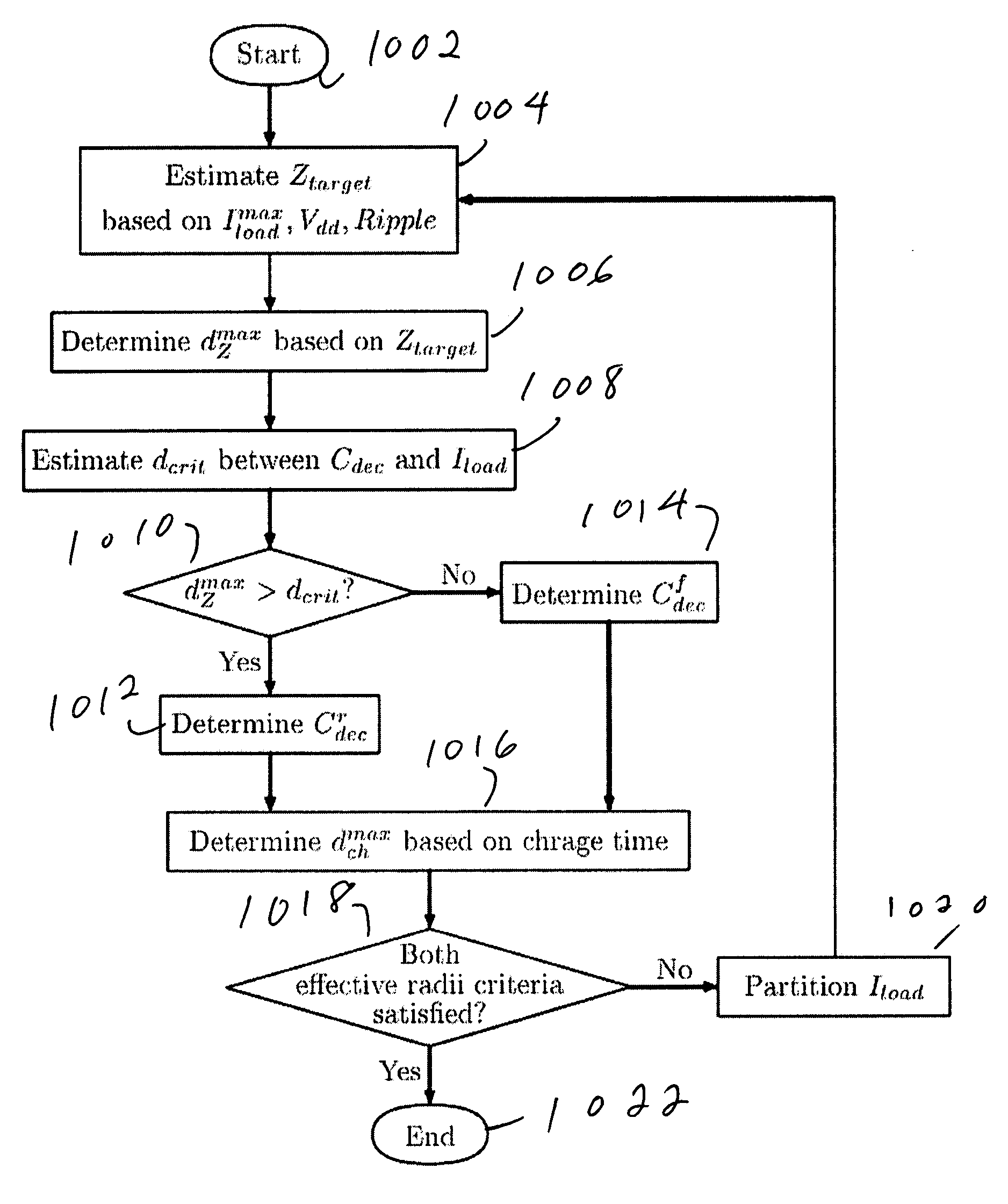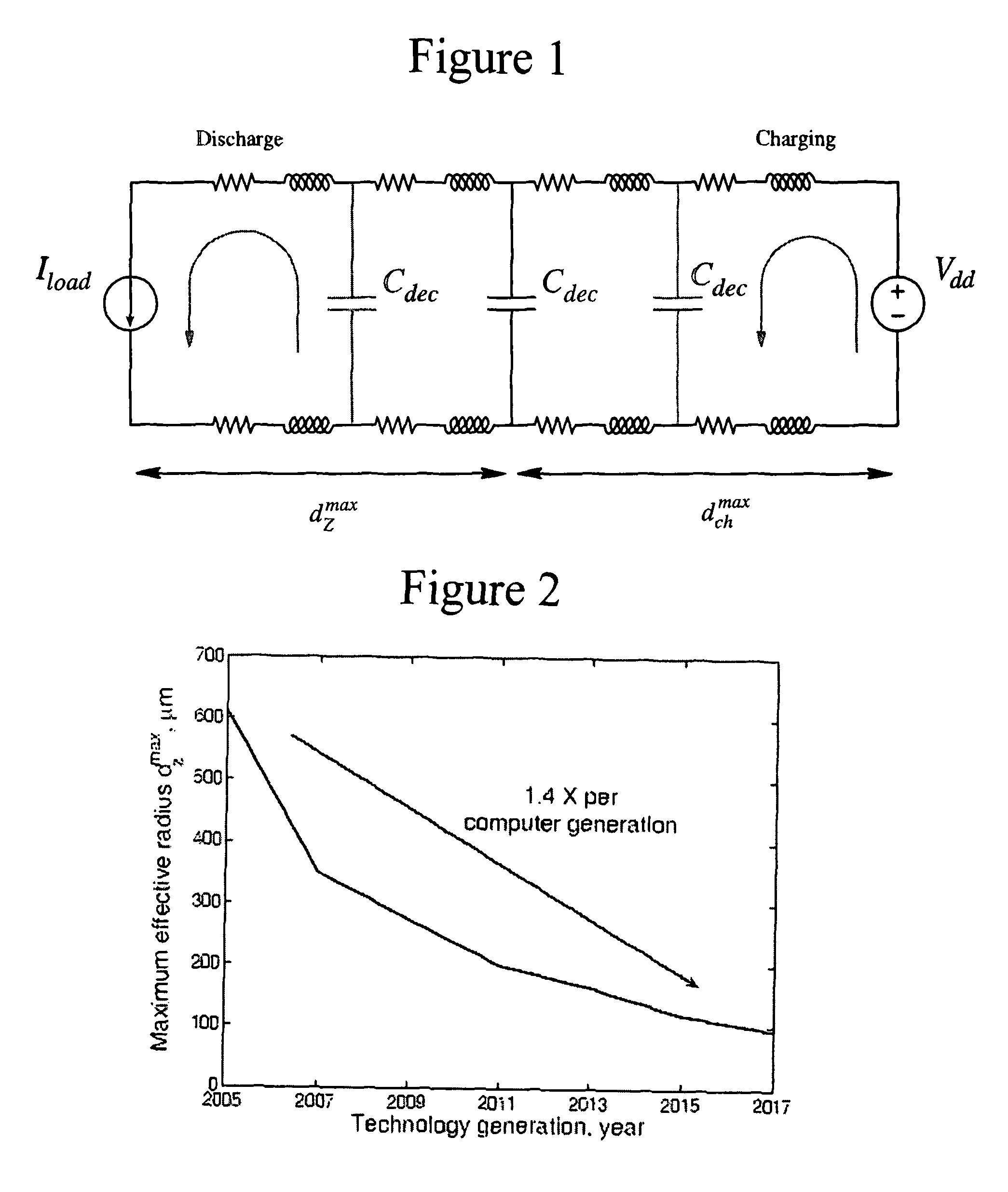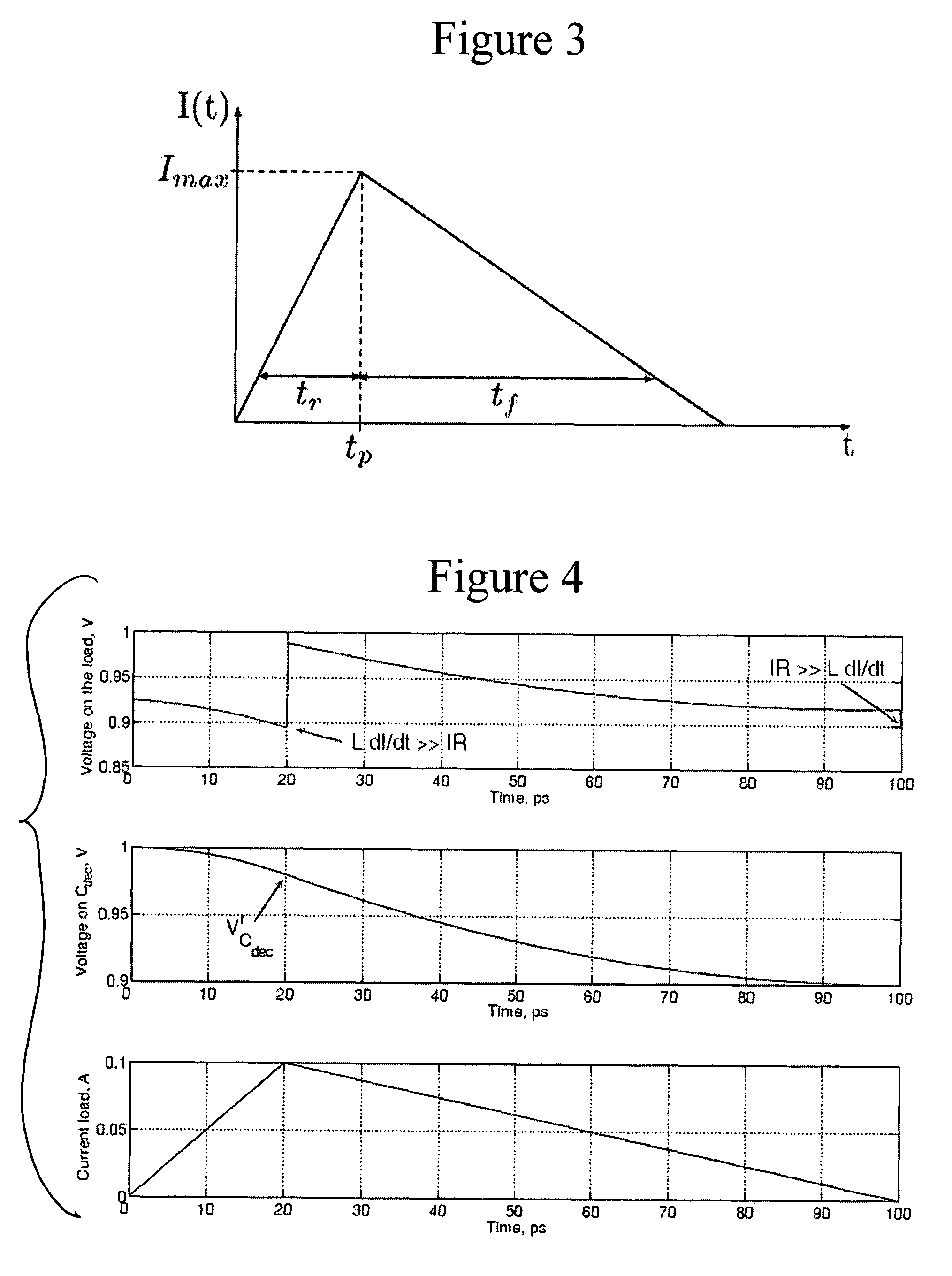Method for effective placement of on-chip decoupling capacitors determined by maximum effective radii
a decoupling capacitor and effective placement technology, applied in the field of effective placement of decoupling capacitors on the chip, can solve the problems of high complexity environment, ineffective decoupling capacitors, high cost, etc., and achieve the effect of reducing and distributing localized current demands
- Summary
- Abstract
- Description
- Claims
- Application Information
AI Technical Summary
Benefits of technology
Problems solved by technology
Method used
Image
Examples
Embodiment Construction
[0038]A preferred embodiment of the invention will be set forth in detail with reference to the drawings, in which like reference numerals refer to like elements or steps throughout.
[0039]Neglecting the parasitic capacitance, the impedance of a unit length wire is Z′(ω)=r+jωl, where r and / are the resistance and inductance per length, respectively, and ω is an equivalent frequency, as determined by the rise time of the current load. The inductance l is the effective inductance per unit length of the power distribution grid, incorporating both the partial self-inductance and mutual coupling among the lines. The target impedance of the metal line of a particular length is therefore
Z(ω)=Z′(ω)×d, (1)
where Z′(ω) is the impedance of a unit length metal line, and d is the distance between the decoupling capacitor and the current load. Substituting the expression for the target impedance Ztarget presented in M. Popovich and E. G. Friedman, “Decoupling Capacitors for Multi-Voltage Power Dist...
PUM
 Login to View More
Login to View More Abstract
Description
Claims
Application Information
 Login to View More
Login to View More - R&D
- Intellectual Property
- Life Sciences
- Materials
- Tech Scout
- Unparalleled Data Quality
- Higher Quality Content
- 60% Fewer Hallucinations
Browse by: Latest US Patents, China's latest patents, Technical Efficacy Thesaurus, Application Domain, Technology Topic, Popular Technical Reports.
© 2025 PatSnap. All rights reserved.Legal|Privacy policy|Modern Slavery Act Transparency Statement|Sitemap|About US| Contact US: help@patsnap.com



